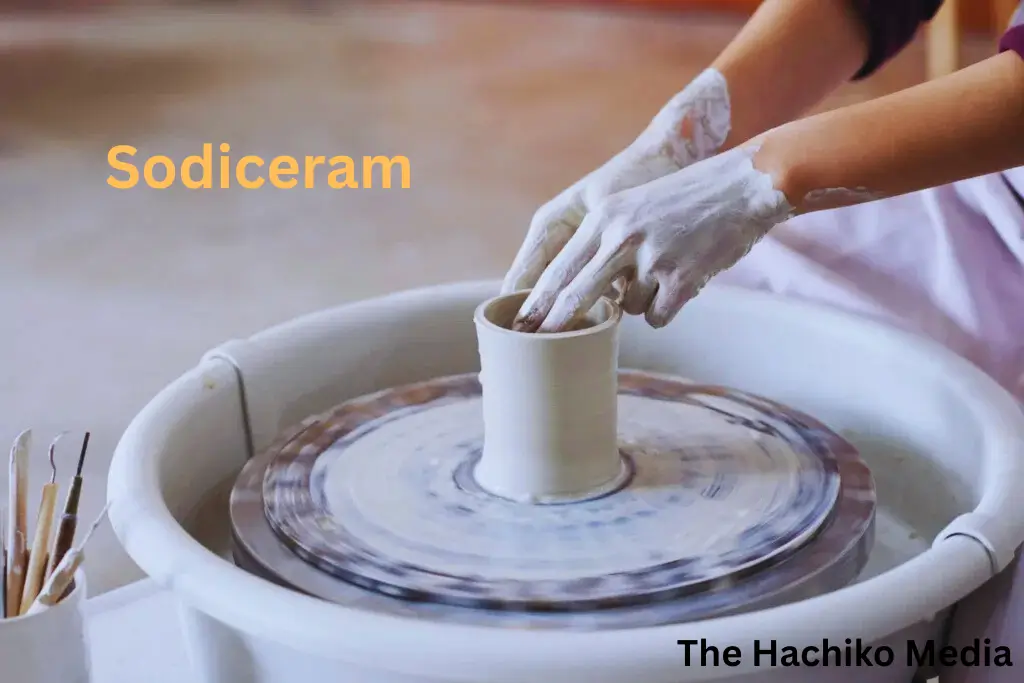The ceramics industry is undergoing a transformation thanks to Sodiceram. Imagine a material that creates items that are both aesthetically pleasing and environmentally responsible by fusing innovation and sustainability. This innovative method differs from conventional ceramic materials in that it makes use of sodium-based chemicals. Sodiceram, which has its roots in cutting-edge chemical research, offers both manufacturers and consumers countless opportunities.
Sodiceram is a game-changer as companies look for more sustainable alternatives. It is not only about making long-lasting products; it is also about improving performance in a variety of applications and building a greener future. Come along as we investigate how Sodiceram can change our perceptions of ceramics and the future of this fascinating technology.
The Advantages of Ceramics Made Using Sodium-Based Compounds
In the field of ceramics, chemicals based on sodium have exceptional advantages. They improve the melting qualities, making fire procedures easier and more effective. Significant energy savings during production may result from this.
These substances also make ceramic materials stronger and more resilient. Sodium helps build a strong structure that resists deterioration over time when it is incorporated into formulations.
Their capacity to reduce thermal expansion rates is a further benefit. Because sodium-based ceramics are less likely to break when exposed to temperature variations, they are perfect for a variety of applications.
Furthermore, by improving glaze adherence on surfaces, these chemicals produce finishes that are both aesthetically pleasant and useful. Adding salt to ceramics improves performance in a number of ways and creates a world of innovative opportunities.
Ceramic Types Made with Sodiceram
A wide variety of ceramics are produced as a result of soda. The special qualities that sodium-based compounds impart are largely responsible for this adaptability.
Porcelain is a prominent kind that is distinguished by its strength and transparency. Sodium is added to increase its resilience without sacrificing its delicate beauty.
Stoneware is a further kind that is renowned for its durability and ability to withstand heat shock. Because it creates a smoother surface, sodaram is perfect for both artistic and functional objects.
Sodic materials are also advantageous for earthenware. It produces vivid hues that are appealing to artists who are looking to express themselves creatively.
Advanced sodic compositions give rise to high-performance ceramics. In specialist applications where accuracy is critical, such as electronics and aerospace components, these materials are essential.
Sodiceram’s Use in a Range of Industries
Sodiceram is incredibly versatile and finds use in many different sectors. It is a dependable material for bricks and tiles in the construction industry, offering both strength and visual appeal.
The special qualities of Sodiceram are also advantageous to the automobile sector. It is perfect for parts that need to last in harsh environments because of its heat-resistant properties.
Because of its superior electrical resistance, Sodiceram is utilized in electronics as insulators and substrates. This program guarantees peak performance while extending the lifespan of electronic gadgets.
Sodiceram is also embraced by the art world for its sculptures and ornamental items. Artists value the rich colors and complex patterns that sodium-based chemicals may produce.
Due to its biocompatibility, this cutting-edge ceramic is used in dentistry and medical equipment in healthcare institutions. These varied applications demonstrate Sodiceram’s significance in contemporary manufacturing processes across industries.
Benefits and Drawbacks of Sodiceram
Sodiceram has a number of benefits that make it desirable in the ceramics sector. Its sodium-based ingredients improve longevity, resulting in goods that can tolerate deterioration over time. Because of its resiliency, Sodiceram is a great option for applications with a lot of traffic.
Additionally, better thermal characteristics may result from the usage of sodium compounds. Sodiceram-produced ceramics frequently have superior insulating qualities, which makes them appropriate for a range of heating applications.
But there are also restrictions to take into account. Because of particular handling and processing conditions for sodium, the production process can be more complicated than for ordinary ceramics. Higher manufacturing costs could be the outcome of these complications.
Furthermore, not every formulation performs at its best in every situation, even though the advantages are significant. Industries hoping to successfully include Sodiceram into their product lines must comprehend these subtleties.
Upcoming Developments and Sodiceram’s Potential
There is a bright future for Sodiceram. Researchers are investigating novel sodium-based compounds that further improve the qualities of ceramics as technology develops.
New developments in material science may result in ceramic goods that are strong and lightweight, making them perfect for a range of industrial uses.
Another area of interest is Sodi ceram’s adaptability. As environmental concerns continue to develop, interest in its potential application in eco-friendly products and sustainable building materials is growing.
Furthermore, advancements in 3D printing have the potential to completely transform the way that Sodi ceram is used. Efficient creation of customizable designs enables the creation of special applications suited to particular requirements.
Industry cooperation could lead to innovative applications for Sodi ceram, ranging from sophisticated electronics to medical equipment. As we continue to explore the potential of this material, the future seems bright.













